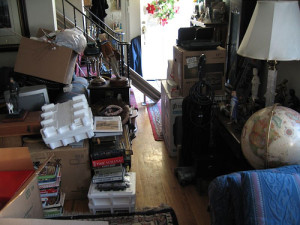 “Shall I get you a bicarbonate of soda?” This was a question Curly would ask Moe in the old Three Stooges comedy shorts. No matter what precarious situation Moe may find himself, Curly would suggest bicarbonate of soda – aka baking soda – as a cure all solution. While the scenes were played for laughs, the fact remains baking soda DOES have a variety of uses. Often, it is a much safer alternative to common chemical products people use.
“Shall I get you a bicarbonate of soda?” This was a question Curly would ask Moe in the old Three Stooges comedy shorts. No matter what precarious situation Moe may find himself, Curly would suggest bicarbonate of soda – aka baking soda – as a cure all solution. While the scenes were played for laughs, the fact remains baking soda DOES have a variety of uses. Often, it is a much safer alternative to common chemical products people use.Baking soda is a derivative of sodium bicarbonate which was originally found in mineral springs. The first early uses of sodium bicarbonate were primarily as a saltsubstitute. This usage can be traced back to the ancient Egyptians. However, it was not until the 18th century in France that the modern form of baking soda came into being. The product was developed from sodium bicarbonate soda ash and it was massed produced for a number of uses. In general, there are two forms of baking soda: a more natural and more artificial version. (There are no purely natural forms of baking soda available on the market.) Obviously, it was closer to its natural state in earlier times. Today, it is refined in two methods, the Solvay Method and the Trona Ore Method. The Trona Ore method is a more natural process and those that prefer organic products will lean towards purchasing it.
And, yes, there are millions of people who regularly purchase baking soda. Ultimately, baking soda is enormously popular because it has almost innumerable uses. Some of the common uses for baking soda include the following:
Cooking Product – Baking soda is added to a multitude of baked foods for leavening. (This is probably where it derived the nickname baking soda) Its main purpose it to make breads, cakes, and other “dough foods” rise when they are in the oven.
Antacid – Sometimes the food you eat just doesn’t agree with you. Thankfully, you can mix the baking soda with water and drink it down. This can definitely aid an upset stomach. And now you know where the bicarbonate of soda joke comes from.
Deodorizer – Baking soda can effectively nullify less than appealing smells. That is why it is common placed in refrigerators as a “fail safe” against spoiled food and in cat litter boxes for the obvious reason.
Stain Removing – Placing baking soda on stained clothes prior to washing will greatly increase the odds of the stains dissipating. It can also be effectively used as a degreaser when washing dishes.
Fire Retardant – This is one of the more surprising uses for baking soda. Believe it or not, baking soda can quite effectively put oil and electrical fires due to its release of carbon dioxide when it comes in contact with the fire.
This is only a brief list of the many uses for baking soda. Perhaps, in time, a number of other uses yet to be discovered may arise. What is most amazing about this is that no matter how many products are produced in a lab, no one can come up a product as helpful, popular, and versatile as common baking soda.
Photo by: Thomas Perkins -
Read more: http://greenliving.net








